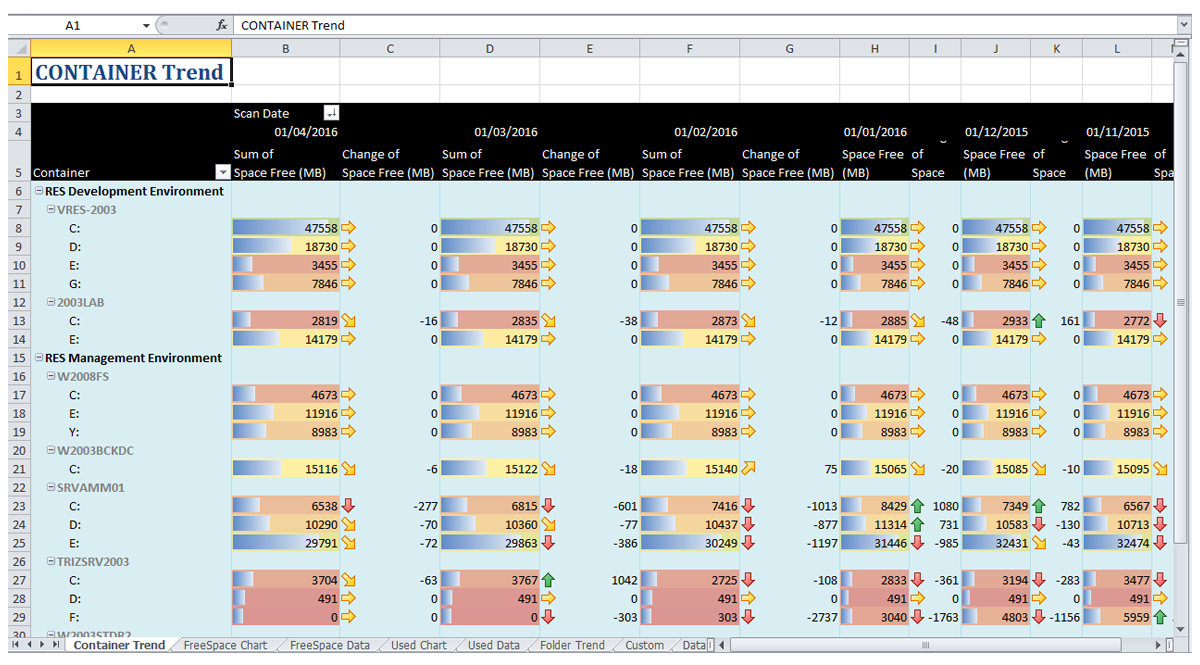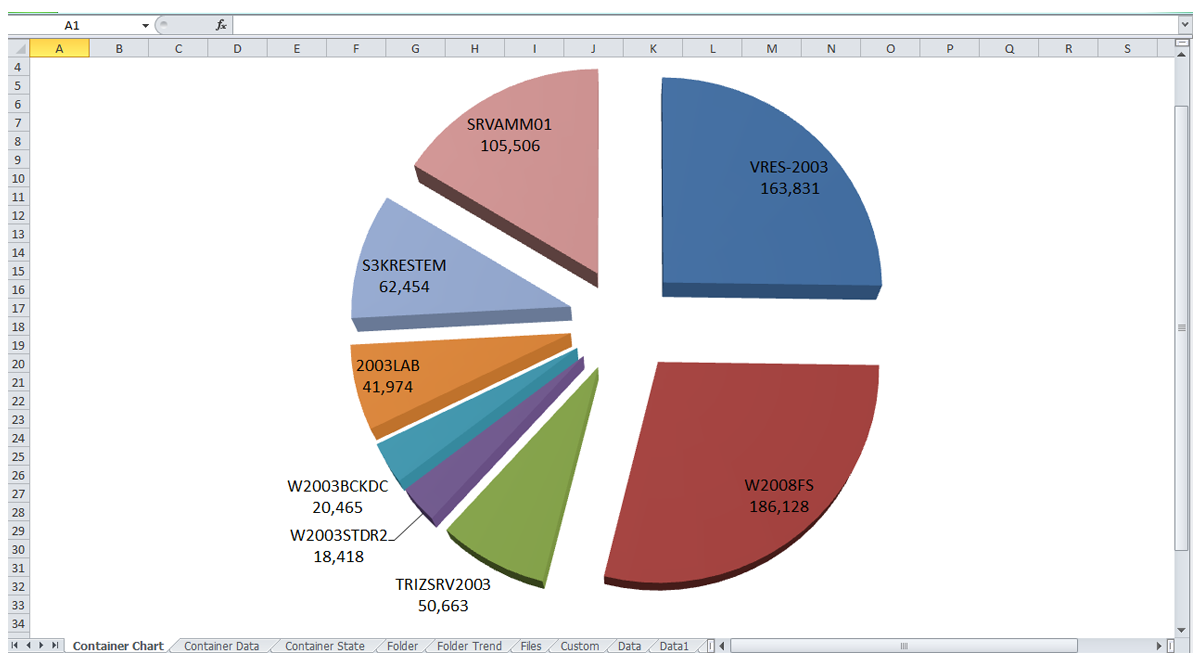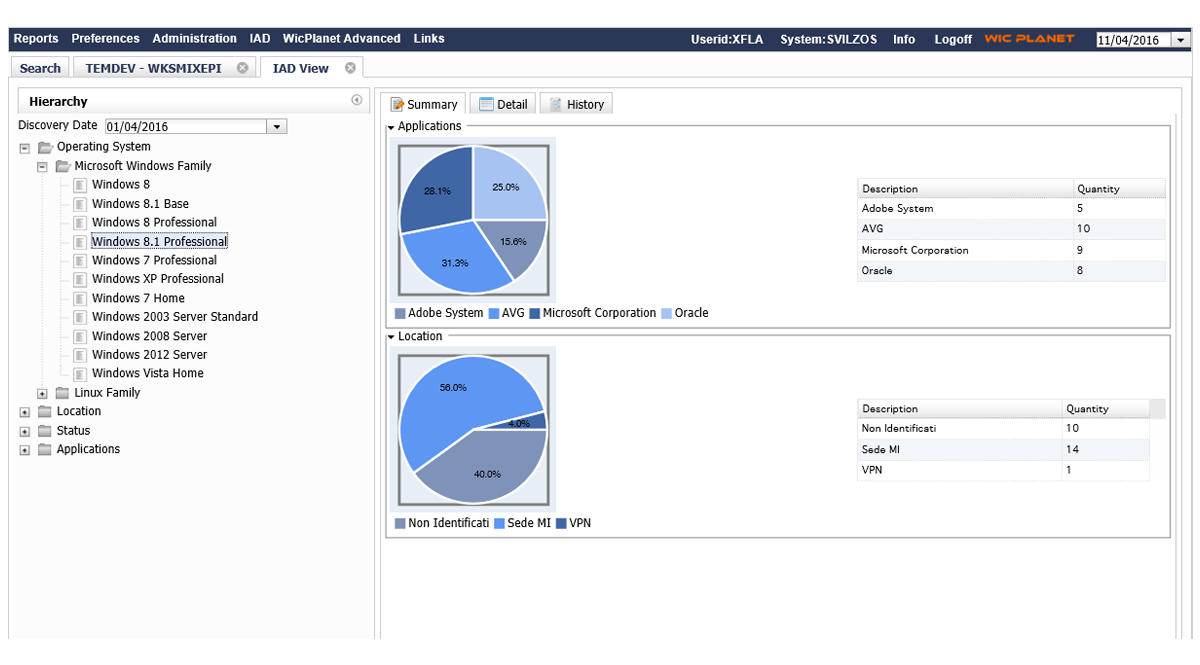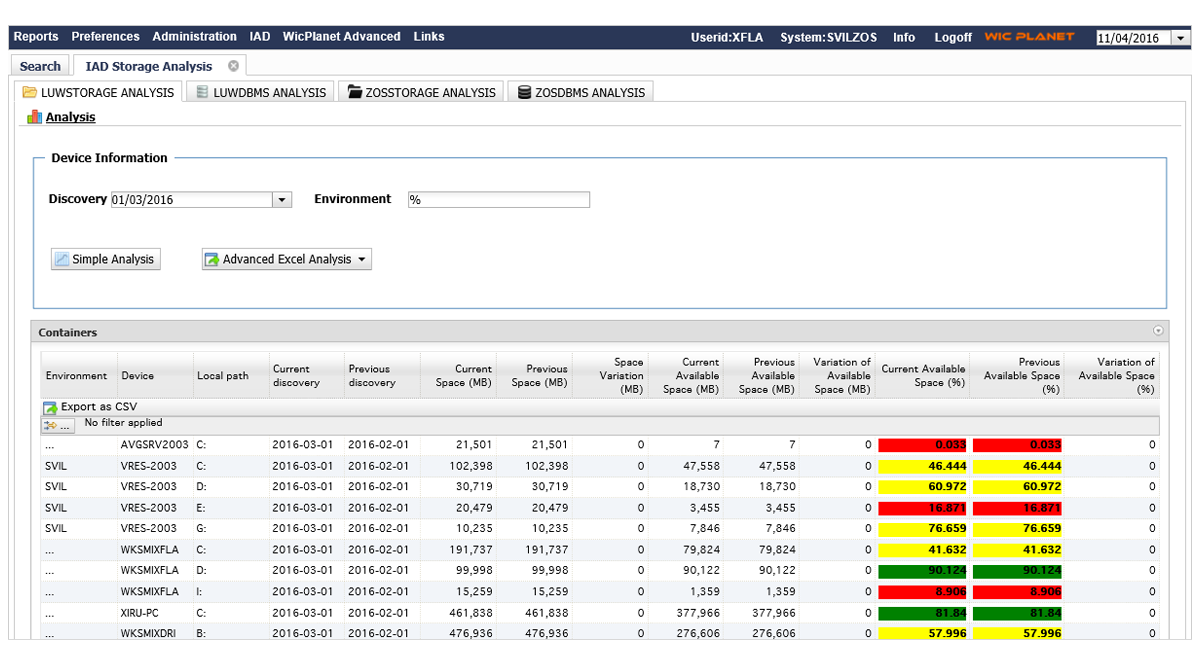RES-IAD
Need to reduce management costs, multiple hardware platforms (servers, terminals, totems, mobile device…),the disparity of operating systems and middleware, use of specific software dedicated to a multitude of varied functions, checking the presence of SW not allowed. All these aspects are a daily challenge for the staff responsible for ensuring the proper management of the information system environment.
How to ensure knowledge of the entire IT structure, its governance, the compliance of the various software components and how to understand the complex network of ties? How to reduce the cost of ownership?
RES-IAD was created with the primary objective of collecting information concerning the IT infrastructure of a company to facilitate integrated documentation, timely and centralized storage of HW and SW assets, allowing for proper budget planning and a reduction in operating costs.
THE RES-IAD SOLUTION
The power of the system comes into play especially in its ability to collect and consolidate a large amount of information related to IT infrastructure, with particular attention to those areas that are related to user devices (i.e. the devices and software that are more difficult to track and monitor), and the use of a central resource (often “out of control”): such as storage.
The information collected makes the general environment more understandable, allowing on one hand the identification of the elements which are not of standard type or obsolete, and on the other hand, the analysis of use (qualitative and quantitative) of storage.
In addition to synthesized and historical data, it is also possible to access the detailed information collected via a component discovery.
The product is characterized by:
- Its ability to collect information related to the various nodes (endpoints)
- The powerful and versatile web interface
- Very flexible use of RES Suite tools for the analysis of the collected data
- Use of a centralized repository (RDBMS) for the definition and management of the data that are typical of the products of the RES Suite family.




OBJECTIVES AND FUNCTIONS OF RES-IAD
RES-IAD allows each endpoint to perform a self-assessment and test the policies set through a single intelligent agent (installed on each endpoint to trace and document).
RES-IAD is an innovative technology, which combines powerful and critical features of the RES Suite solution. The result is a particularly simple solution which combines flexible and innovative functionality and is simple and straightforward to deploy and use.
The system is installed in just a few hours, so as not to impact the performance of the client’s network, and is able to perform the collection of information virtually in real time on any supported platform. RES-IAD can easily be extended and enriched with the inclusion in its repository of additional “user” information (such as licensing, codes regarding corporate assets etc.).
The automation capability in the collection and analysis of information results in an increase in the visibility of the use of HW systems, software components, enterprise storage, etc. along with reducing the activities and the time required to create the analysis and the resulting gains report, among other things, to demonstrate compliance and enterprise-wide use of the software and storage resources.
BENEFITS
- Detailed census of actual software installed
- Identification of unauthorized applications
- Visibility and control of each node from a single management console
- Control any number of endpoints, regardless of their location, connection type and status
- Information about open ports and services used
- Reduction of complexity and management costs
- Documentation regard information on customer applications
- A detailed description of any “proprietary” system applications (requires DOCET/EV)
- Identification of the versions of applications and operating systems
- Synthesized and historical overview of the main features of the system and information collected
- Usage of data (quantitative and qualitative) for file systems on open systems and relational RDBMS




